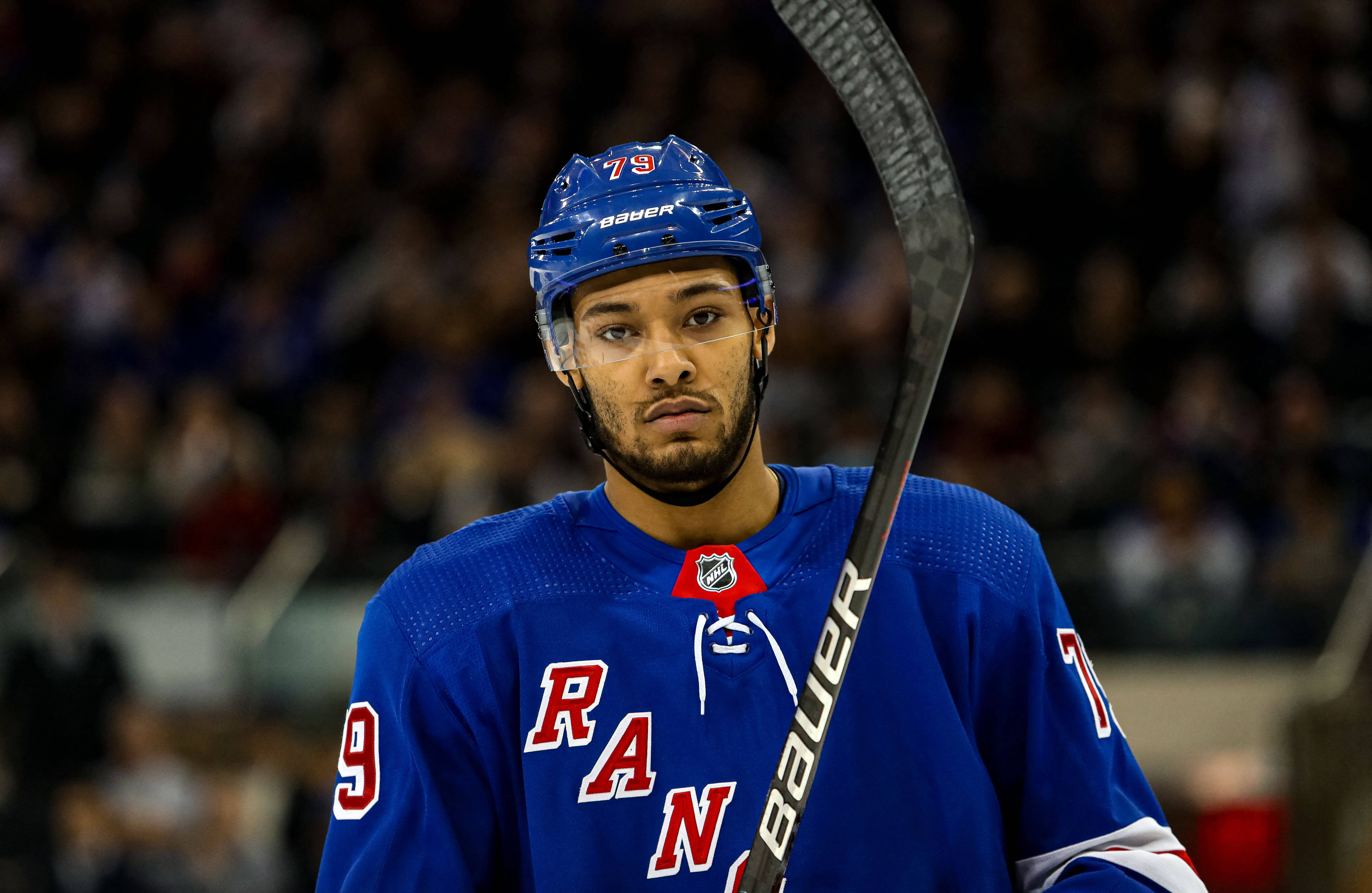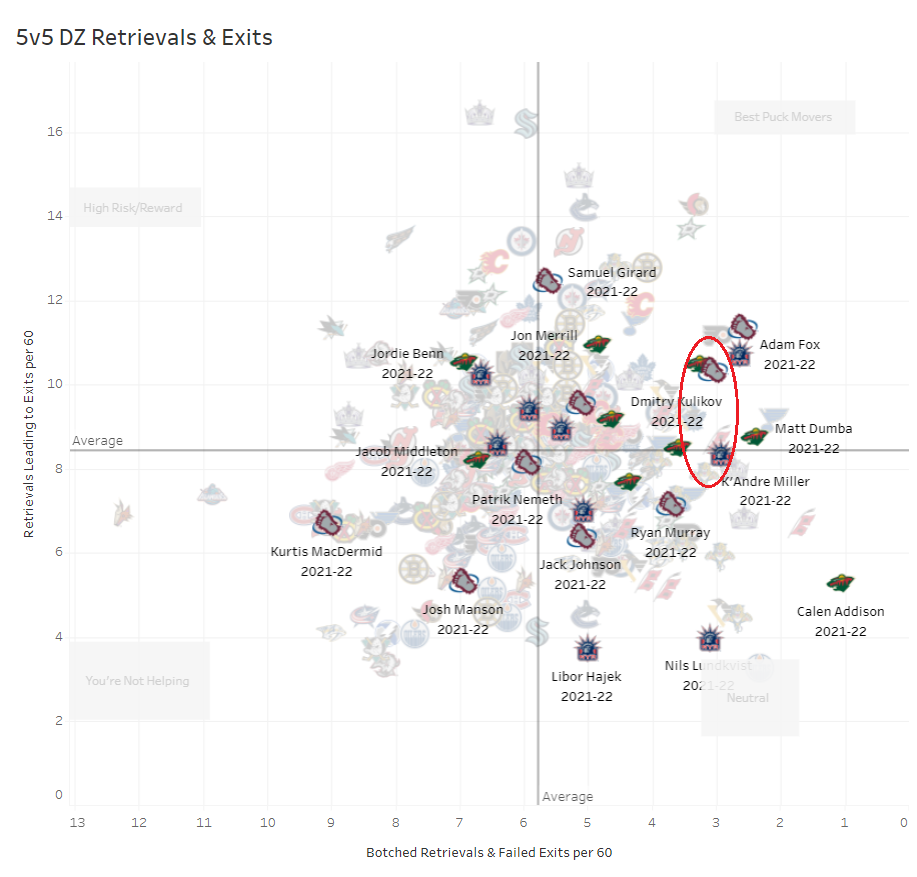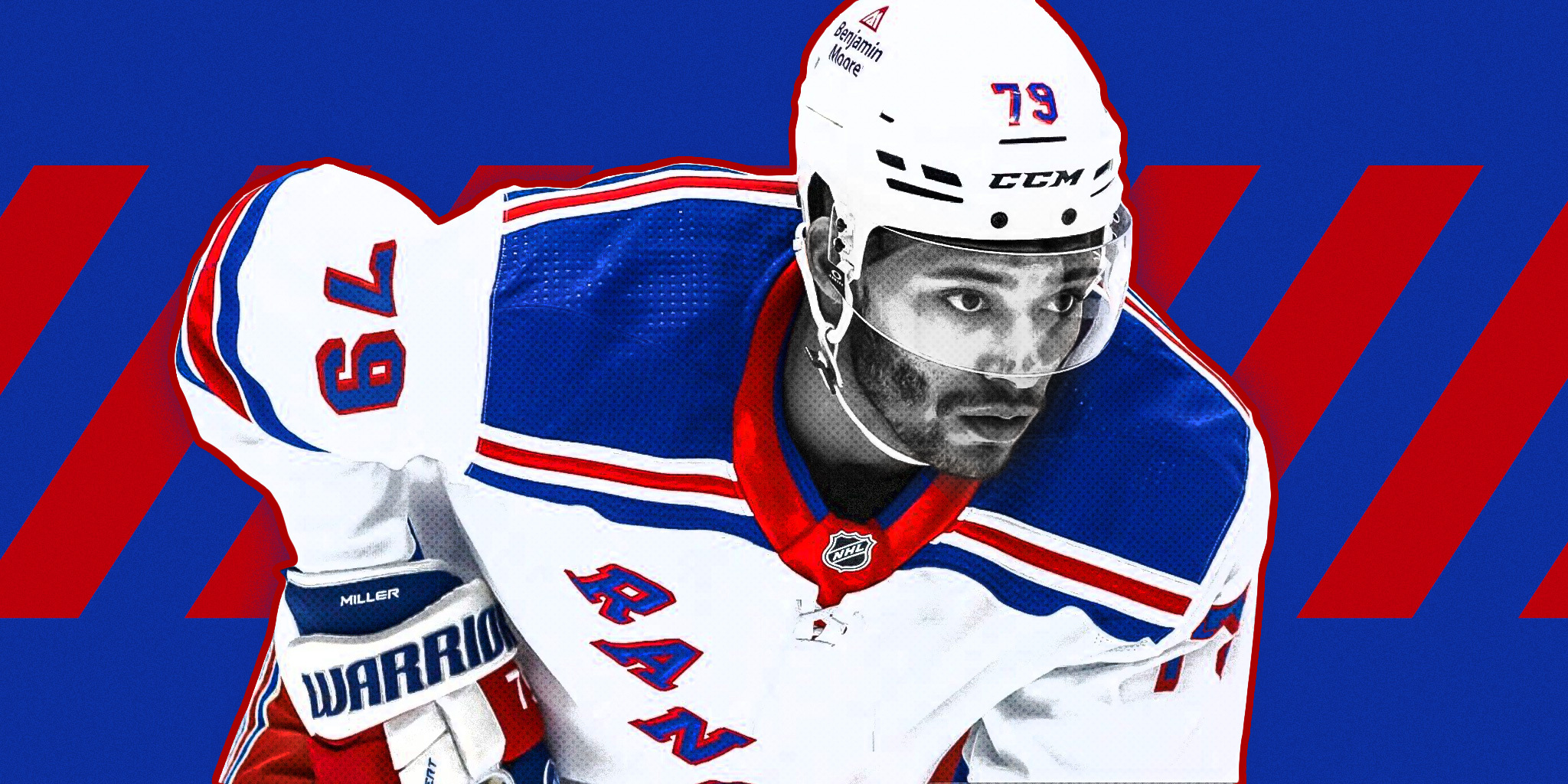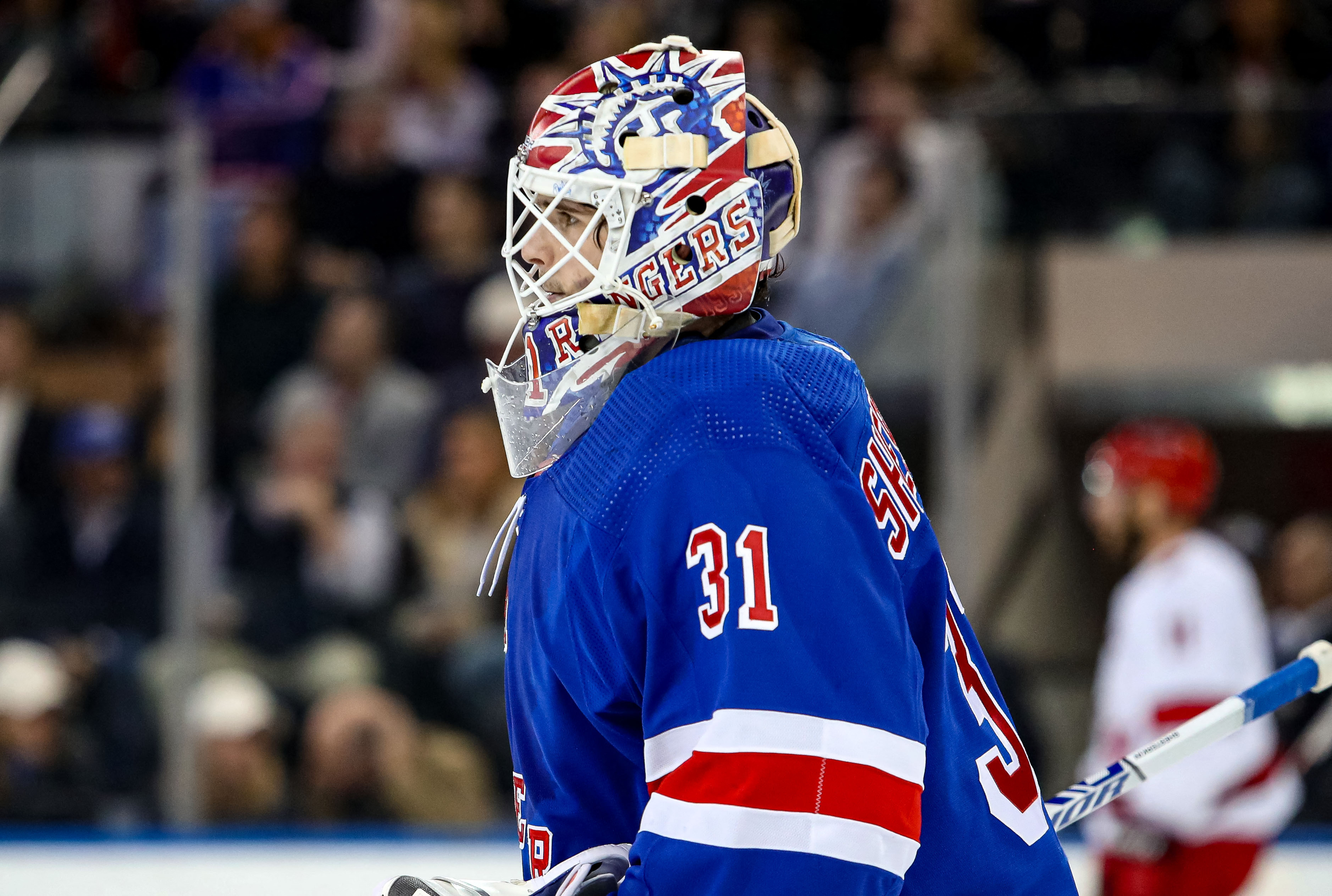Fantasy Hockey Feature: What's going on with K'Andre Miller?

With 43 points last season, New York Rangers defenceman K’Andre Miller was starting his ascension in the fantasy hockey realm. He had shown a penchant for racking up peripheral stats like hits and blocks, but the points lagged until his third season. However, now in his fourth season, the production has taken a big step back with just 18 points in 45 games. Let’s look at Miller’s development, what went right in 2022-23, what’s gone wrong in 2023-24, and how this all informs us as to what we can expect from him in the seasons to come.
What stood out immediately was that Miller was thrust into a big role as a rookie. The Bubble season saw him skate over 21 minutes a night, which was third among Rangers defensemen, and he was often second behind Adam Fox as Jacob Trouba missed nearly one-third of the campaign. Few rookie blue-liners achieve that level of ice time, and it’s usually reserved for high-end prospects like Owen Power, Rasmus Dahlin, Quinn Hughes, and the like.
As for his actual play, it was a mixed bag. From a fantasy perspective, his 82-game paces were for roughly 8 goals, 11 assists, 96 shots, 119 blocks, and 144 hits. Those latter two categories stood out, and the rest was fine for a rookie blue liner. He had a good goal differential at 5-on-5, reaching over 55% of the goal share, but his expected-goals play driving was literally bottom-10 in the league among regular blue-liners.
That poor play driving wasn’t (and isn’t) a death knell, though. Other defencemen in the bottom 10 that season include Hughes, Josh Morrissey, Erik Karlsson, and Rasmus Andersson. Two things did stand out in his tracking data, though: he was above-average in controlled zone entry percentage and above-average in percentage of scoring chances against:

Teams targeted him on the attack, so he gave up a lot of scoring chances against per 60 minutes of 5-on-5 time, but as a percentage of the entries against, he did well. All in all, not bad for a rookie.
Miller’s second season is where his calling card – excellent defence – came to the forefront. His expected goals against impact ranked in the 86th percentile of all regular blue liners in the league, or a high-end top-pair rate. Great goaltending helped his goals against numbers, but he was great besides that, and there were a few reasons why.
First, he was able to deny the blue line on 13.1% of entries against, second on the team behind Fox (who is elite in this sense), and much higher than the league average of 10.1%. On top of that, he didn’t make a lot of mistakes – he was roughly average by defensive zone retrievals/60, but well above average in failing to exit the zone, and the red circle below shows Miller with roughly the same rate of zone exit failures as Jared Spurgeon and Devon Toews:

Not only was he holding the blue line very well, but the turnovers were rare, and that helped keep the defensive zone clean.
Miller was also jumping into the play more, as his zone entries/60 and offence created off the rush both increased. That helped increase his assists/60 at 5-on-5 by nearly 66% from his rookie season and led to a higher points/60 despite a large decline in shooting percentage. His blocked shots/60 declined but his hits/60 improved so it was definitely a better sophomore effort than his rookie campaign.
The 2022-23 season was where his offence took off. The young defender created a lot more off the rush, and that helped him generate nearly 50% more scoring chances/60 at 5-on-5 than the prior year. In fact, his scoring chances/60 was in the 68th percentile, or a fringe top-pair rate. It helped him set career-high marks in goals, primary assists, total assists, and shots per 60 minutes. That season also saw a small rebound in his blocks but a huge improvement in his hits. In total, he was 1 of 3 rearguards with at least 40 points, 100 shots, 100 blocks, and 150 hits. He was rounding into a high-end multi-cat fantasy option.
Things haven’t been as productive in 2023-24. There is still a lot of offence off the rush, the defence is still solid, he has a high percentage of controlled zone entries, and he’s carrying the puck in transition more than he ever has. However, his points/60 at 5-on-5 is over 20% lower than last season, and his assists/60 at 5-on-5 has been by 41%.
Miller’s production drop can be easily explained by the forwards in front of him. With the top two lines off the ice at 5-on-5, the Rangers are scoring 1.6 goals/60. Last season, that number was 2.5/60. With The Kid Line being broken up, and Filip Chytil injured for much of this campaign, New York’s bottom-six has been bereft of scoring. Miller has spent nearly 28% of his 5-on-5 time with at least one of Jimmy Vesey or Barclay Goodrow and has zero points in those minutes. There is a luck factor in there, but the bottom-six has struggled to produce basically since Game 1.
This is a case where not only does an unproductive bottom-six hurt Miller’s production, but the lack of a PP role is glaring. Fantasy defencemen can survive some unproductive 5-on-5 time and still have good point production with a consistent power play role – Shayne Gostisbehere comes to mind – but without that role, lack of scoring from the forwards can crush any hopes of productivity.
Now in his fourth season, Miller is finding his stride offensively, and the peripheral stats are still solid. However, he’ll be stuck behind Fox for many years yet, and the lack of a power play role will continue to not only cap his fantasy upside but make him a more volatile fantasy option because he’s at the mercy of their forwards’ ability to score at 5-on-5 all through the lineup.
*Stats from Natural Stat Trick and Evolving Hockey, with tracking data from AllThreeZones



